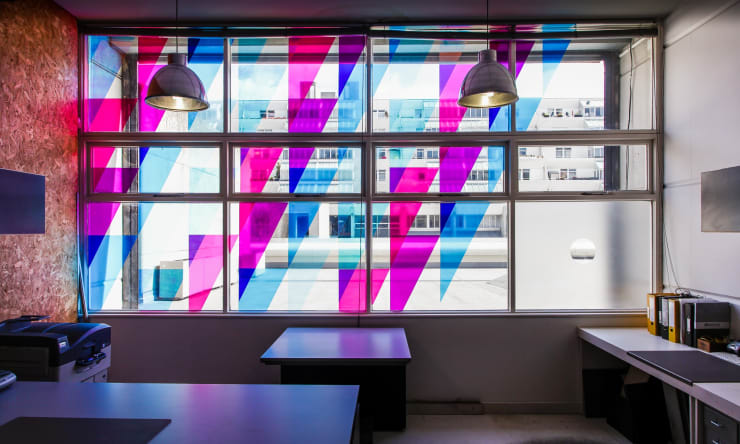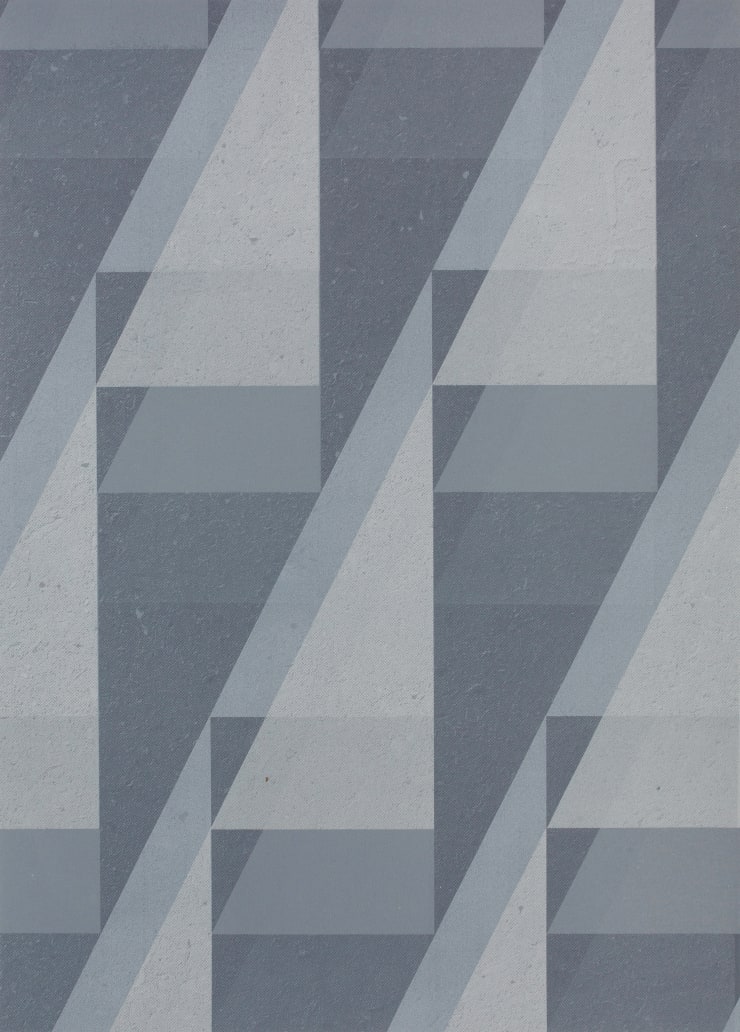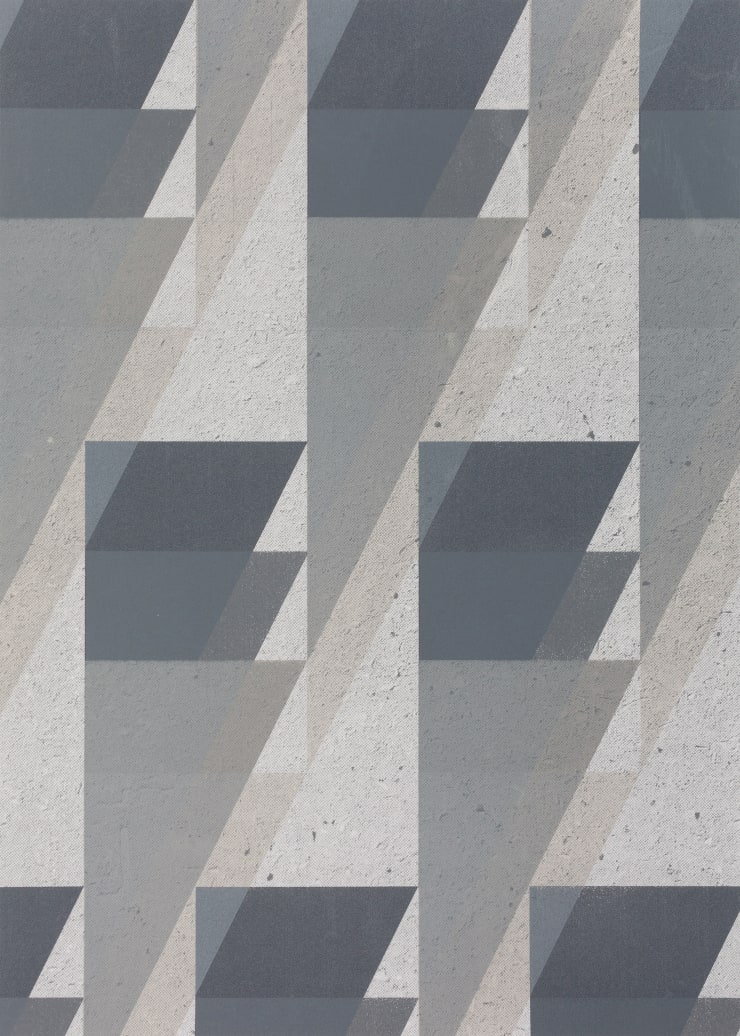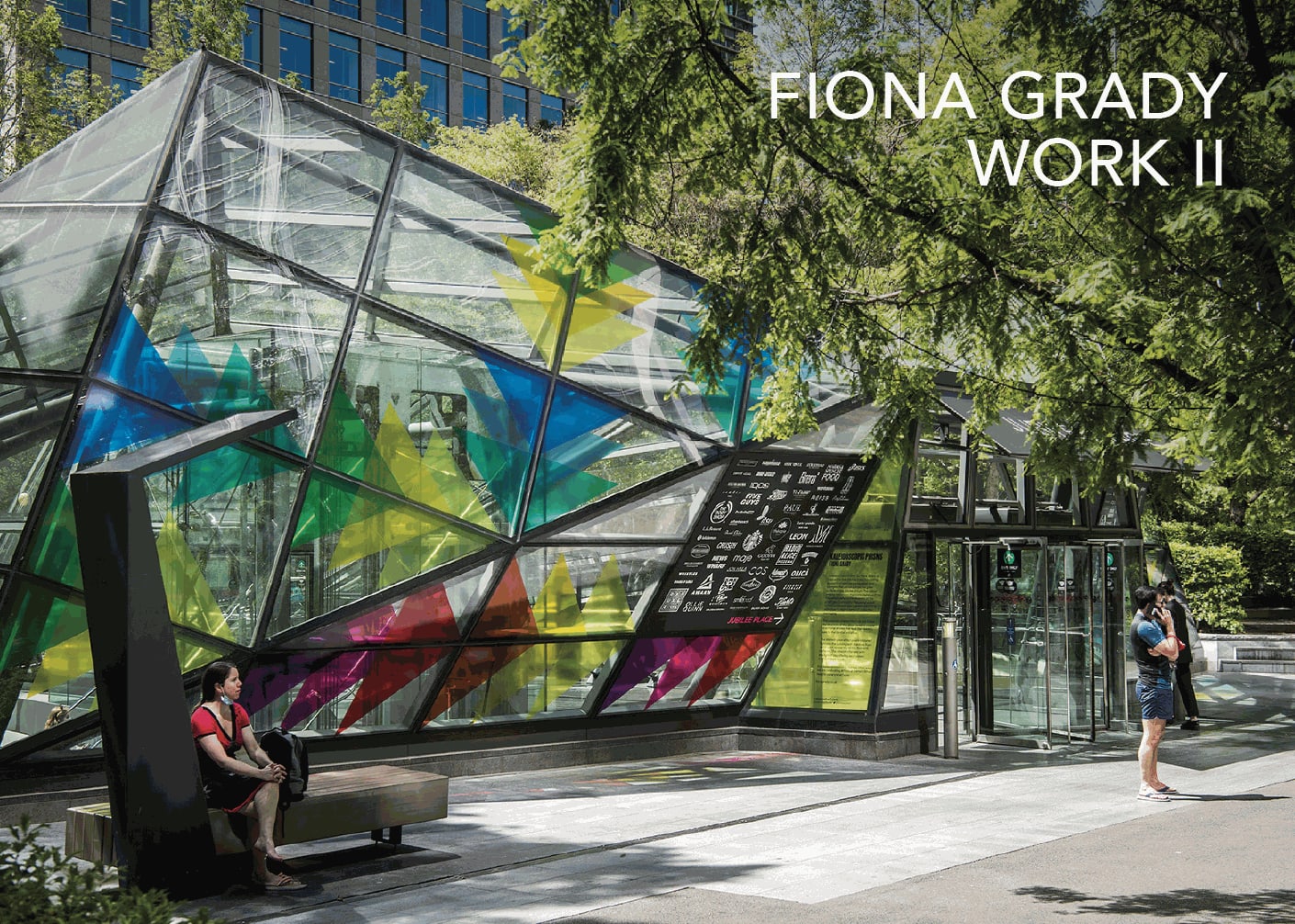Vanishing Points: Artist in Residence at Passengers, London
Fiona Grady's Being in Architecture residency at Passengers in the iconic Brunswick Centre, London.
During her residency Grady developed her research project Vanishing Points. The title is a nod to the compositional technique commonly used to create perspective drawings that allows lines to converge at an endpoint. She looked to blur the reality of the physical space, exploring its ability to channel light and colour, stripping back to the fundamental structure of the building's core design. The resulting work is the large scale window installation Vanishing Points, a new series of unique screenprints, mirrored perspex interventions, photographs and a short films.
Passengers is a site-specific exhibition / residency series conceived and curated by Julie F Hill that explores the historical, social and material contexts of various sites and architecture. For its inaugural series artists presented work that explored the real and imaginative associations of The Brunswick Centre - a Modernist, mixed residential and commercial development in Bloomsbury, London - which is also our headquarters. The series has since expanded to include off-site exhibitions, residencies and publications.
The title Passengers references the 1975 film The Passenger by Michelangelo Antonioni that features the Brunswick Centre as a location and exploits it as a powerful mise-en-scene. The plot follows a journalist who assumes the identity of a dead businessman while working on a documentary in Chad, unaware that he is impersonating an arms dealer with connections to the rebels in the current civil war. This notion of a 'passenger' as someone who inhabits transient identities and spaces, relates to how each artist is rendered a passenger within the larger exhibition structure. This structure is generative and multi-directional, allowing different ideas, themes and narratives to emerge, overlap and intersect, creating dialogue with each other over time.
The Brunswick Centre is a grade II listed residential and shopping centre designed by Patrick Hodgkinson in the mid-1960s and has an interesting history. It's often misinterpreted as a Brutalist megastructure and likened to a bunker or space-ship from sci-fi movie set - in contrast to the architect's vision: '…it was to be a village, not a megastructure, and never 'Brutalist', but would rather create a poetic construct of feel
and not look…'. Inspired by Existentialist philosophy, features such as the cascading glass facades of the 'winter gardens' were to give contemplative views of open skies '





















